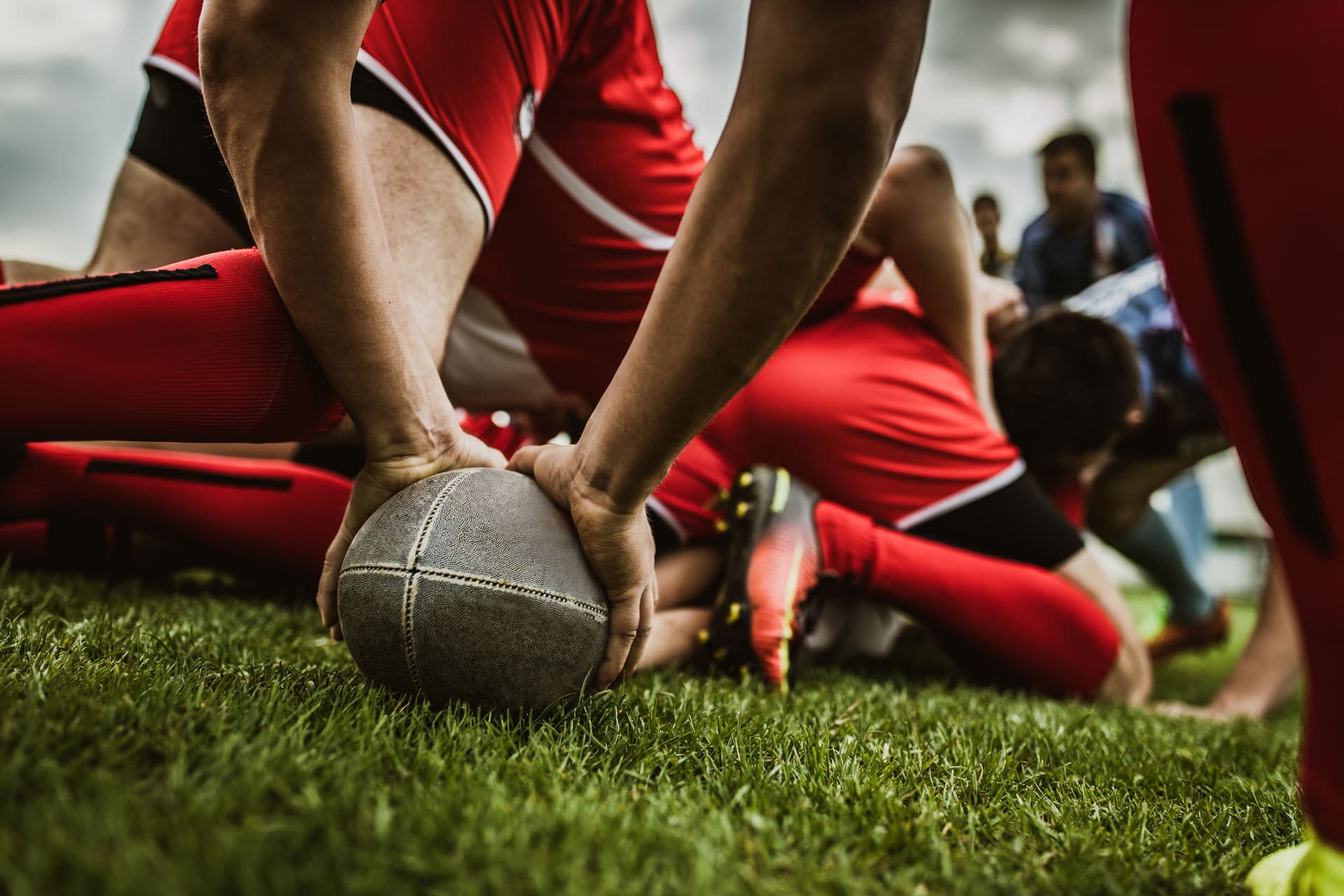Rugby
Is Rugby Safer Than American football?
It is safe to say that the available evidence suggests that there are more frequent serious injuries in rugby than in American football.

Rugby player holding a ball//Getty Images
Some argue that because in the sport of rugby, the laws protect players and there is a focus on not only wrapping arms in the tackle but also avoiding the head and neck, it is a safer sport than American football. However, the data suggests otherwise.
Studies have shown that there are more serious injuries and concussions in rugby than in American football.
It cannot be conclusively stated that it is safer to play American football than rugby, but the data currently available to the public points to rugby being the sport with greater risk involved in playing.
Both sports have had repeated issues related to head injuries and associated complications specifically.
What Protective Equipment is Used in Rugby and American Football?
Rugby has minimal requirements in terms of compulsory protective equipments. However, in many teams, mouthguards are compulsory.
Aside from protecting against dental injuries, they play a key role in ensuring all-round player safety. World Rugby have announced investments in recent years into smart mouthguard technology to assist with the monitoring of high acceleration incidents for head injury assessments.
Scrum caps are often worn by players to protect ears, but they offer minimal concussion protection.
Shoulder pads are often used by players along with body armour and shin guards, but these items, too, are not mandatory.
American football players wear more robust protective gear due to the sport's focus on full-speed collisions.
Most notably, they wear helmets – a hard, plastic shell with interior padding, designed to protect the skull from heavy impacts. The helmet also has a face mask and chin strap and is compulsory in the NFL.
All players in the NFL must additionally wear shoulder pads, thigh pads, and knee pads which have been approved by the League office. All pads have to be covered by the outer uniform. Knee pads are required to be a quarter of an inch thick at minimum and must cover the knees. Punters and placekickers are, however, permitted to omit thigh and knee pads.
Like in rugby, mouthguards are commonplace in American football. However, the NFL has yet to make them mandatory, citing a lack of conclusive evidence that they help prevent concussions.
Neck rolls and other additional protective bodily equipment are often used in addition to the compulsory equipment in the NFL rulebook.
What Are the Rules on Tackling in Rugby and American Football?
A key difference between tackling rules for rugby and American football is that rugby players are required to tackle below the shoulders, whereas American football players are merely required to avoid the head and neck. However, in professional American football, players on the ground are forbidden from lunging at a quarterback’s legs. This rule was introduced after an injury to Tom Brady which kept him out of the 2008 season.
Another crucial difference between the sports is that in American football, offensive players can block the running routes of tacklers. In fact, there are players whose core responsibilities include shielding the quarter-back from potential tacklers. In rugby, this kind of contact off the ball is not allowed.
Tackling in Rugby & American Football
| Aspect | Rugby | American football |
| Target area | Below the shoulders | Generally, any part of the body except the head or neck. Rushing defenders are also prohibited from forcibly hitting in the knee area or below a passer who has one or both feet on the ground. |
| Head/neck contact | Illegal | Illegal |
| No arm/shoulder charge | Illegal | Illegal |
| Tackling a player in the air | Illegal | Illegal |
| Key tackler responsibility | Release and roll away immediately after tackle | Avoid late hits, particularly on passers |
| Helmet use | Not allowed | Must not be used to initiate contact |
| Blocking the tackler off the ball | Not allowed | Allowed |
Which Has More Concussions: Rugby or American Football?
According to a 2018 Sports Med (Auckland, New Zealand) systematic review of sport in head injury in team contact sport, men’s rugby was found to have the highest incidence of concussion in both match play (3.00/1,000 athlete exposures) and practice (0.37/1,000 athlete exposures).
Men’s tackle football came in second for match play concussion rate at 2.5 per 1,000 AE, and third for concussions experienced during practice (0.30/1,000 AE).
Annika Prien, Alexander Grafe, Roland Rössler, Astrid Junge and Evert Verhagen were listed as authors of the study.
Although numbers vary, this study echoed a trend of greater concussions in rugby and American football that was found in a previous 2016 study published in the American Journal of Sports Medicine and authored by Nienke Willigenburg which had focused on collegiate football and club rugby.
There have been high-profile examples of brain trauma suffered by players in both sports – notably Aaron Hernandez in American football and James Collins in rugby among many others.
Which Has More Serious Injuries: Rugby or American Football?
An Auckland University of Technology report showed American football resulting in 1.0 catastrophic incidents per every 100,000 players between 1975 and 2005, which was more than 75% fewer incidents than the index tallied in rugby. Therefore, it is safe to say that the available evidence suggests that there are more frequent serious injuries in rugby than in American football.
Leonard Solms is a freelance journalist who has been covering local and international sport from South Africa since 2015. Best known for his work for ESPN, he has also written for Al Jazeera, The Continent, New Frame, Planet Rugby and GiveMeSport among several other publications.